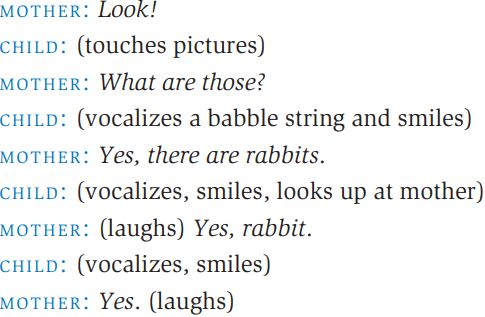

Grammar


Tenses


Present

Present Simple

Present Continuous

Present Perfect

Present Perfect Continuous


Past

Past Simple

Past Continuous

Past Perfect

Past Perfect Continuous


Future

Future Simple

Future Continuous

Future Perfect

Future Perfect Continuous


Parts Of Speech


Nouns

Countable and uncountable nouns

Verbal nouns

Singular and Plural nouns

Proper nouns

Nouns gender

Nouns definition

Concrete nouns

Abstract nouns

Common nouns

Collective nouns

Definition Of Nouns


Verbs

Stative and dynamic verbs

Finite and nonfinite verbs

To be verbs

Transitive and intransitive verbs

Auxiliary verbs

Modal verbs

Regular and irregular verbs

Action verbs


Adverbs

Relative adverbs

Interrogative adverbs

Adverbs of time

Adverbs of place

Adverbs of reason

Adverbs of quantity

Adverbs of manner

Adverbs of frequency

Adverbs of affirmation


Adjectives

Quantitative adjective

Proper adjective

Possessive adjective

Numeral adjective

Interrogative adjective

Distributive adjective

Descriptive adjective

Demonstrative adjective


Pronouns

Subject pronoun

Relative pronoun

Reflexive pronoun

Reciprocal pronoun

Possessive pronoun

Personal pronoun

Interrogative pronoun

Indefinite pronoun

Emphatic pronoun

Distributive pronoun

Demonstrative pronoun


Pre Position


Preposition by function

Time preposition

Reason preposition

Possession preposition

Place preposition

Phrases preposition

Origin preposition

Measure preposition

Direction preposition

Contrast preposition

Agent preposition


Preposition by construction

Simple preposition

Phrase preposition

Double preposition

Compound preposition


Conjunctions

Subordinating conjunction

Correlative conjunction

Coordinating conjunction

Conjunctive adverbs


Interjections

Express calling interjection


Grammar Rules

Passive and Active

Preference

Requests and offers

wishes

Be used to

Some and any

Could have done

Describing people

Giving advices

Possession

Comparative and superlative

Giving Reason

Making Suggestions

Apologizing

Forming questions

Since and for

Directions

Obligation

Adverbials

invitation

Articles

Imaginary condition

Zero conditional

First conditional

Second conditional

Third conditional

Reported speech


Linguistics

Phonetics

Phonology

Linguistics fields

Syntax

Morphology

Semantics

pragmatics

History

Writing

Grammar

Phonetics and Phonology

Semiotics


Reading Comprehension

Elementary

Intermediate

Advanced


Teaching Methods

Teaching Strategies

Assessment
Input
المؤلف:
George Yule
المصدر:
The study of language
الجزء والصفحة:
171-13
26-2-2022
805
Input
Under normal circumstances, human infants are certainly helped in their language acquisition by the typical behavior of older children and adults in the home environment who provide language samples, or input, for the child. Adults such as mom, dad and the grandparents tend not to address the little creature before them as if they are involved in normal adult-to-adult conversation. There is not much of this: Well, John Junior, shall we invest in blue chip industrials, or would grain futures offer better short term prospects? However, there does seem to be a lot of this: Oh, goody, now Daddy push choo-choo? The characteristically simplified speech style adopted by someone who spends a lot of time interacting with a young child is called caregiver speech.
Salient features of this type of speech (also called “motherese” or “child-directed speech”) are the frequent use of questions, often using exaggerated intonation, extra loudness and a slower tempo with longer pauses. In the early stages, this type of speech also incorporates a lot of forms associated with “baby talk.” These are either simplified words (tummy, nana) or alternative forms, with repeated simple sounds and syllables, for things in the child’s environment (choo-choo, poo-poo, pee-pee, wa-wa).
Built into a lot of caregiver speech is a type of conversational structure that seems to assign an interactive role to the young child even before he or she becomes a speaking participant. If we look at an extract from the speech of a mother to her child (aged 1 year 1 month) as if it were a two-party conversation, then this type of structuring becomes apparent. Notice how the mother reacts to the child’s actions and vocalizations as if they were turns in the conversation. (This example is from Brunner, 1983.)

Caregiver speech is also characterized by simple sentence structures and a lot of repetition. If the child is indeed in the process of working out a system of putting sounds and words together, then these simplified models produced by the interacting adult may serve as good clues to the basic structural organization involved. Moreover, it has generally been observed that the speech of those regularly interacting with very young children changes and becomes more elaborate as the child begins using more and more language. Several stages in the early acquisition process have been identified.
 الاكثر قراءة في Linguistics fields
الاكثر قراءة في Linguistics fields
 اخر الاخبار
اخر الاخبار
اخبار العتبة العباسية المقدسة

الآخبار الصحية















 "المهمة".. إصدار قصصي يوثّق القصص الفائزة في مسابقة فتوى الدفاع المقدسة للقصة القصيرة
"المهمة".. إصدار قصصي يوثّق القصص الفائزة في مسابقة فتوى الدفاع المقدسة للقصة القصيرة (نوافذ).. إصدار أدبي يوثق القصص الفائزة في مسابقة الإمام العسكري (عليه السلام)
(نوافذ).. إصدار أدبي يوثق القصص الفائزة في مسابقة الإمام العسكري (عليه السلام) قسم الشؤون الفكرية يصدر مجموعة قصصية بعنوان (قلوب بلا مأوى)
قسم الشؤون الفكرية يصدر مجموعة قصصية بعنوان (قلوب بلا مأوى)


















